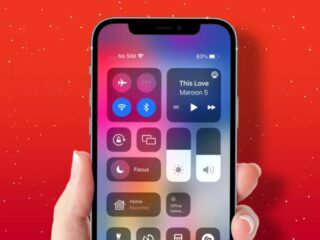
Hyundai’s latest prototype is a truck with an innovative trailer that can fly up to 300 feet in the air. The drone-truck, which has been dubbed “dronecar,” was unveiled at CES 2019 and will be on display at the show until January 8th.
Hyundai’s trailer drone is a truck from the future. It looks like it came straight out of a sci-fi movie, but this is not an alien invasion. The vehicle is actually a semi-trailer that has been converted into a self-driving robot by Hyundai Motor Company.
NEWS IN TECH – Hyundai’s self-driving e-Bogie concept is a hydrogen-powered, zero-emission robot that has the potential to change the way freight is carried on land. It’s possible that truck drivers are becoming concerned.
The Trailer Drone idea and the modular fuel-cell e-Bogie concept based on it are probably the most extreme of the hydrogen-powered concepts shown at the Hyundai Motor Group’s Hydrogen Wave conference this week. These cars symbolize the notion that zero-emission hydrogen fuel cells and self-driving technology are altering the way we think about transportation and logistics – and it all begins, for the most part, when we leave the truck at home.
Bogies, the two-axle subframes that sit at each end of a rail car, are the inspiration for the e-Bogie. The e-Bogie is basically an autonomous electric chassis fueled by a hydrogen fuel cell. It is more of a “transport robot” than a truck. The e-Bogie can do remarkable movements like turning in place and diagonal “crab-walking” due to its four-wheel-independent steering. You can carry a small container or other goods thanks to the sturdy, low-profile design.
When multiple e-Bogies operate together in Cluster mode, things become interesting. Put a pair of e-Bogies on either end of a full-size semi-trailer, and you’ve got a Trailer Drone — an autonomous trailer (or perhaps a convoy) that can navigate shipyards, highways, and even city centers. Hyundai sees the big trailers negotiating tight turns and tiny roundabouts with comfort and professionalism thanks to dual, independent steering installed on each end.
Any e-Bogie may be the front or back of the Trailer Drone mechanically. Nonetheless, the trailer has sensors that assist autonomous driving on highways, as well as front and rear panels that aid high-speed aerodynamics. Hyundai also sees these drones traveling in sections on the road, tightly clustered for improved aerodynamics and long-term efficiency. According to Hyundai, each H2 charge will allow these cars to drive more than 621 miles (1000 km). When the trailer arrives, it can empty itself by raising itself up on its fold-out legs and allowing the e-Bogies underneath to move away. It may be divided into three smaller containers, each of which can be carried to its destination by an e-Bogie on its own.
Outside of transportation and logistics, the e-Bogie vehicle platform may be useful. Hyundai also revealed the Emergency Drone idea, which has a single fuel-cell e-Bogie outfitted with rescue gear. The concept may be used autonomously in dangerous firefighting or disaster relief scenarios, or remotely by emergency responders watching footage from an aerial drone uploaded to the Rescue Drone platform. According to Hyundai, an interior compartment between the drone’s wheels would be available to hold extra supplies or stretchers for transporting the wounded.
It’s unclear how close these cars are to going into production. These hydrogen-powered e-Bogie ideas are only one example of Hyundai Motor Group’s Vision 2040 goal of promoting hydrogen as the future sustainable fuel, which the South Korean government is especially enthusiastic about. Hyundai also revealed a pair of hydrogen-powered heavy-duty trucks and the Vision F.K. concept, as well as a fuel-cell plug-in hybrid sports vehicle, at the Hydrogen Wave conference this week.
Cnet is the source of this information.
Related Tags
- hyundai santa fe price
- who makes hyundai cars
- hyundai santa fe reliability




